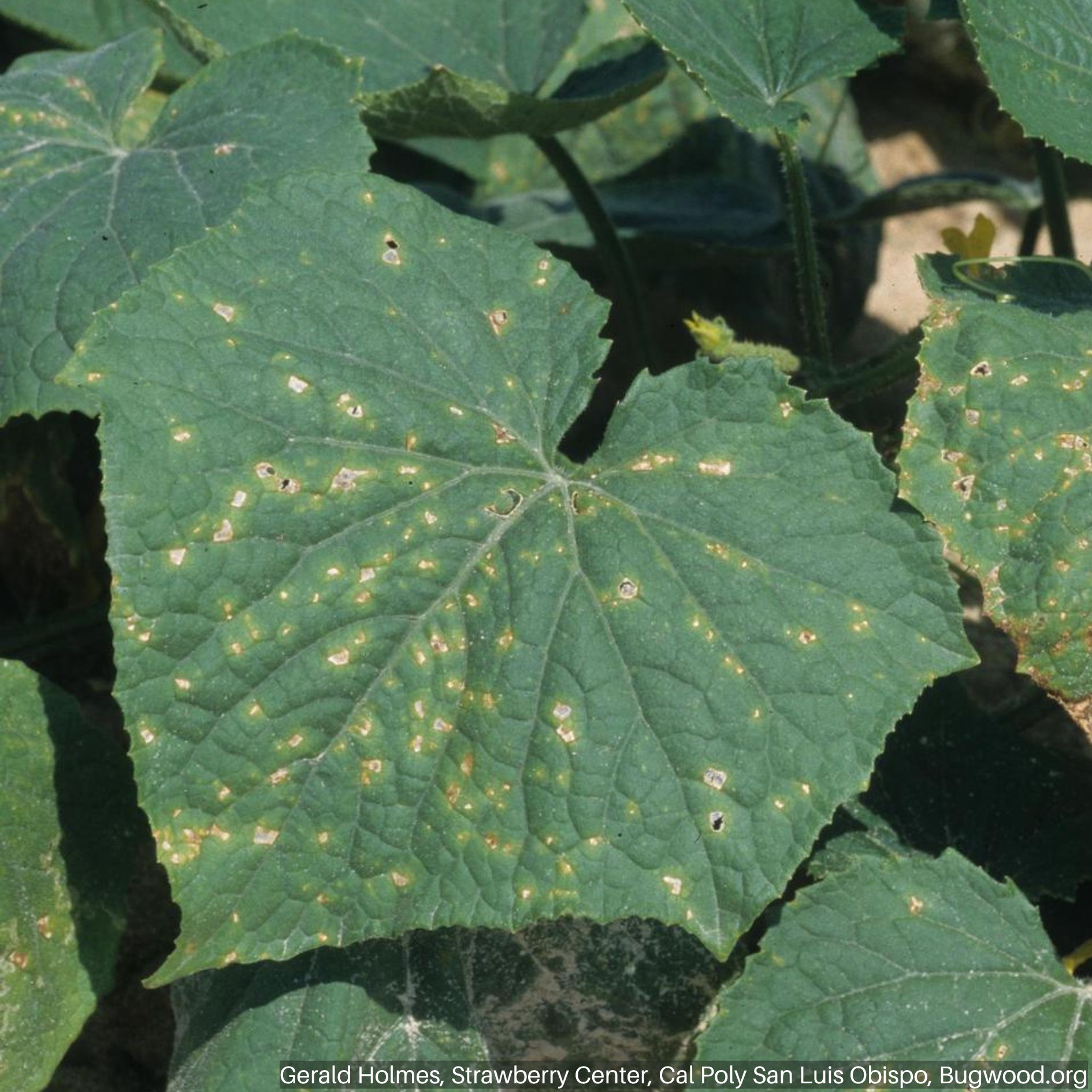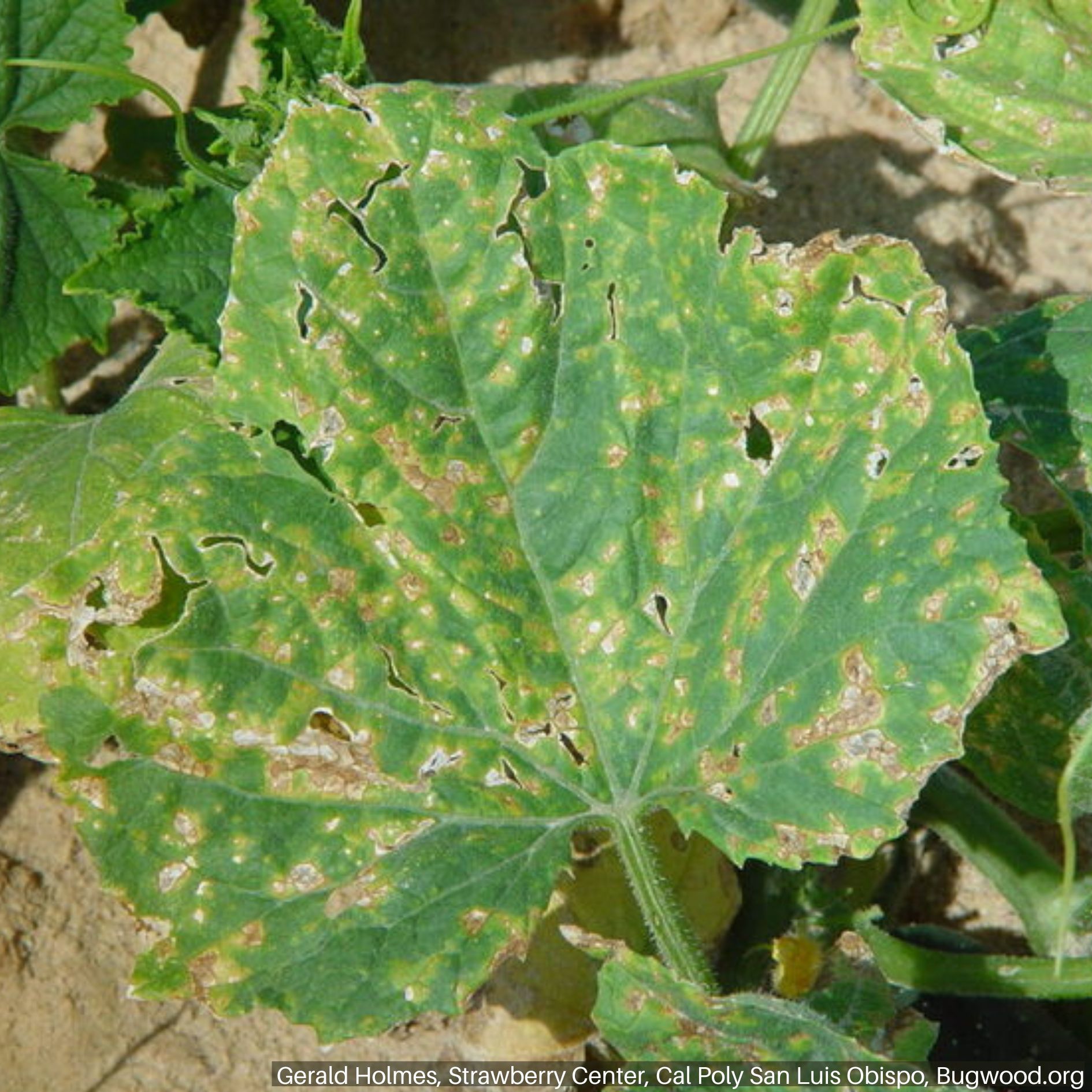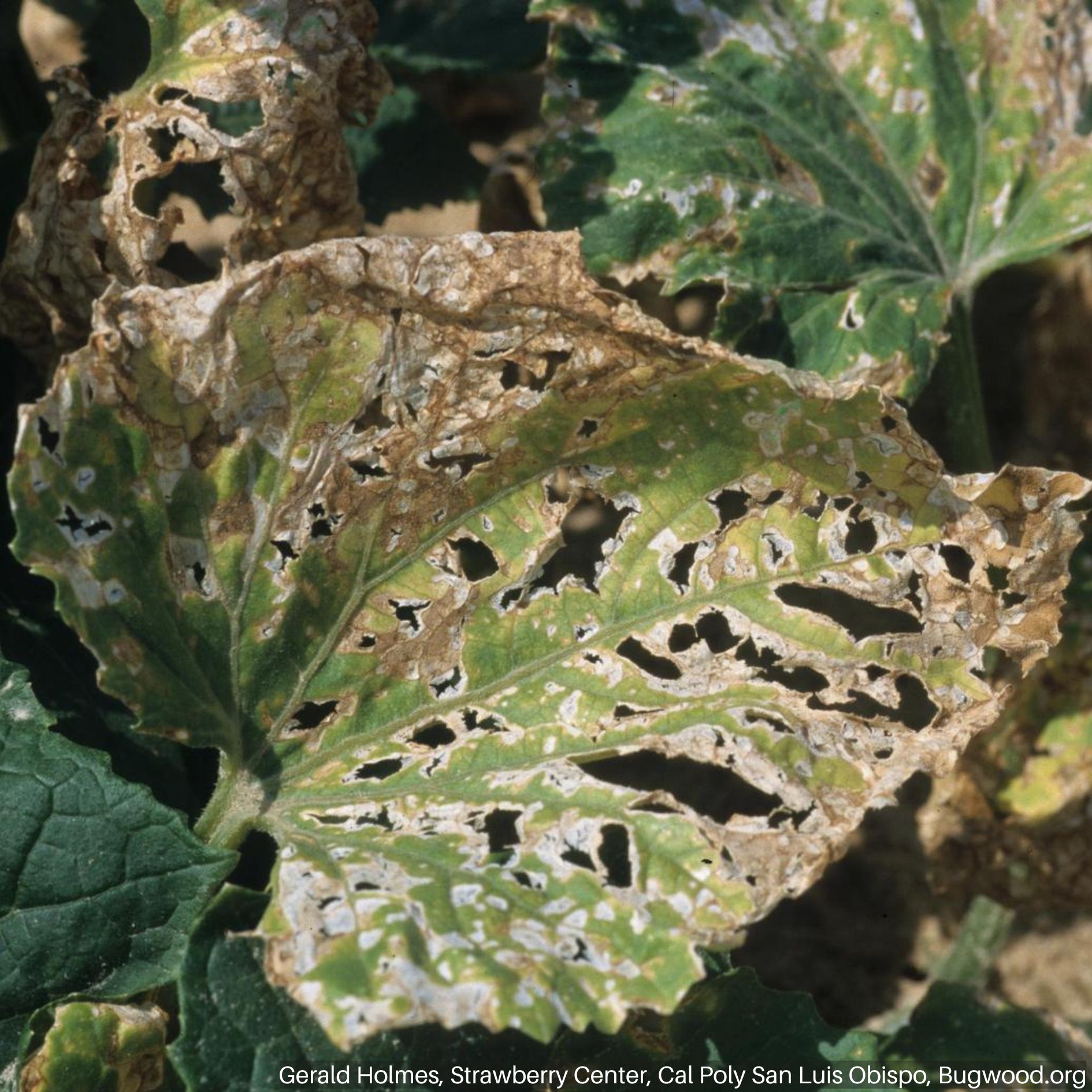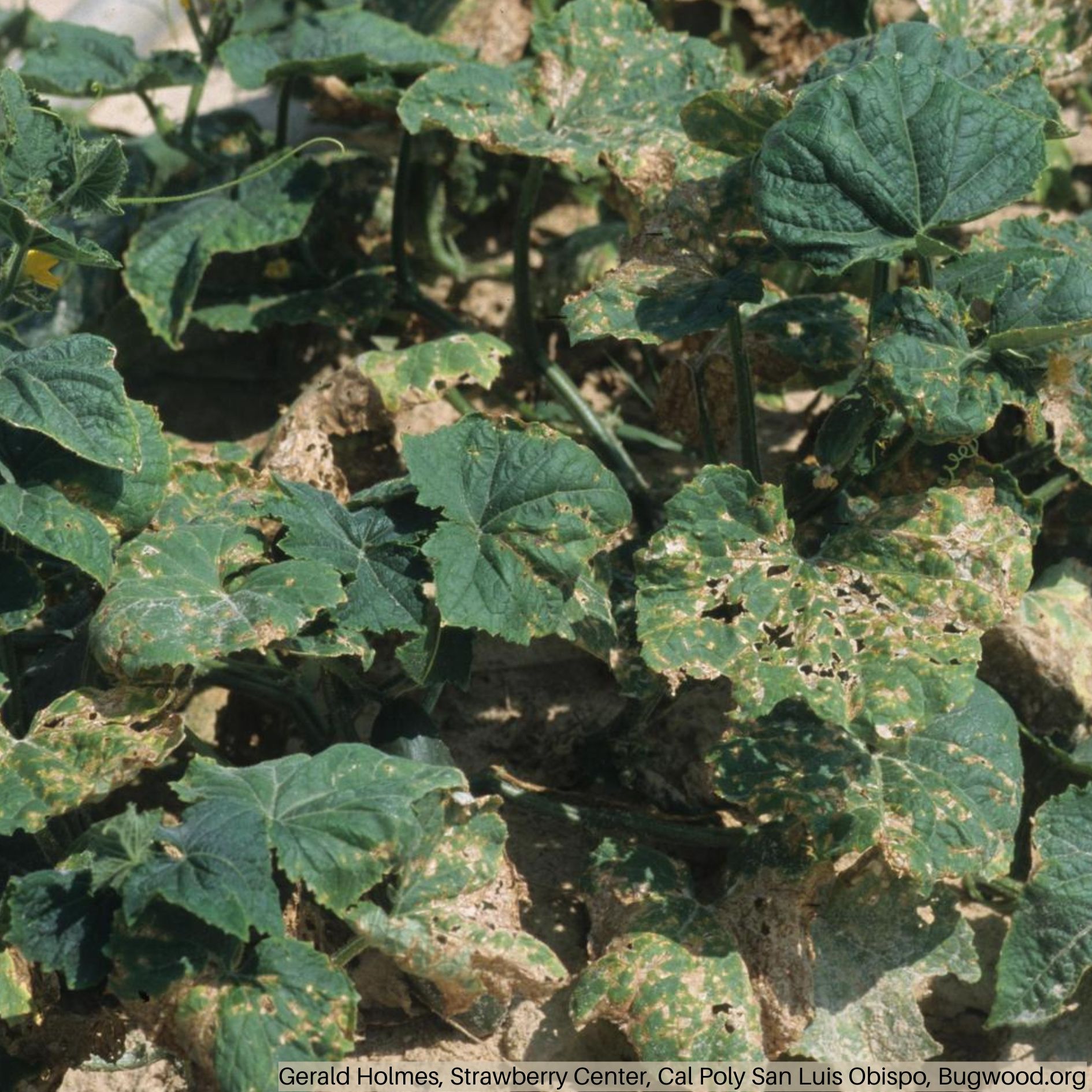Angular Leaf Spot
 Angular Leaf Spot
Angular Leaf Spot Foliar lesions with yellow halos.
Foliar lesions with yellow halos. Lesions delimited by foliar veins.
Lesions delimited by foliar veins. Cucumber plant with angular leaf spot.
Cucumber plant with angular leaf spot.HOSTS
- Cucurbits
DESCRIPTION
Angular leaf spot is caused by the bacteria Pseudomonas syringae pv. Lachrymans. Many species of cucurbits are susceptible, including cucumber, zucchini, and melons.
BIOLOGY
Angular leaf spot is spread by infected plant matter including seeds, and contact with contaminated tools, insects, or water. The disease can be spread quickly by splashing water from rain or irrigation or in times of high humidity. Infection can also occur through infected plant matter in the soil, where it can remain for up to two years.
Primary infections of angular leaf spot occur when seeds containing the bacteria under the seed coat germinate, leading to the infection of the plant’s first leaves. The bacteria will continue reproducing until it has systemically infected the plant internally and externally. In wet conditions, the infected plant will excrete a white or clear liquid. This bacterial ooze can be spread by insects, on tools, or in water. When it comes into contact with a new plant, it will penetrate the plant through stomata or wounds, continuing the disease cycle.
SYMPTOMS
- Brown spots with yellow halos that are confined within leaf veins.
- The center of the spot will become dry and fall out, leaving a tattered hole.
- Small brown spots on fruit, that may lead to bacterial soft rot.
GENERAL MANAGEMENT
- Use certified disease-free seeds.
- Use disease-resistant varieties when possible.
- Rotate cucurbits with non-susceptible crops.
- Remove and dispose of plant debris.
- Avoid watering practices, such as overhead irrigation, that result in wet leaves for prolonged periods.

